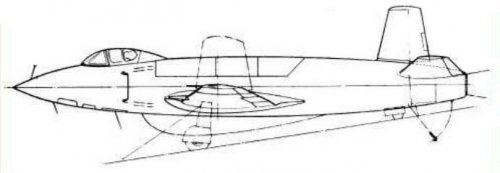Sandy22
ACCESS: Restricted
Dear friends,
I have an incomplete list of Supermarine types (a big part of them are Spitfire variants, but I should still match type-number with RAF version in most cases):
221 Southampton eventually redesignated Scapa
224 Private venture precursor of Spitfire
227 Southampton eventually redesignated Stranraer
228 Walrus private venture prototype
236 Walrus
300 Spitfire Mk.I
304 Stranraer
309 Sea Otter private venture precursor of Spitfire
322 type 322
323 Spitfire
329 Spitfire
330 Spitfire
331 Spitfire
337 Spitfire
340 Spitfire
347 ???
349 Spitfire
350 Spitfire
351 Spitfire
355 Spitfire Mk.VB conversion
356 Spitfire
357 Spitfire
358 Spitfire
360 Spitfire
361 Spitfire
362 Spitfire
365 Spitfire
366 Spitfire
367 Spitfire
369 Spitfire
371 Spiteful
372 Spitfire
373 Spitfire
375 Spitfire
377 Spitfire
379 Spitfire
381 Seagull 1.st prototype
385 Spitfire LF Mk.IXB conversion
386 Spitfire
388 Spitfire
389 Spitfire Prototype
390 Spitfire Production
392 Attacker
395 Spitfire
505
508 type 508/529/543 undercarriage-less fighter
510 type 510/517/528/535
517 type 510/517/528/535
525 Scimitar conversion of 3.rd Type 508 prototype with swept wings
528 type 510/517/528/535
529 type 508/529/543 undercarriage-less fighter
535 type 510/517/528/535 Type 528 fitted with an afterburning version of the Nene, a lengthened nose and a tricycle undercarriage, precursor of the Supermarine Swift
543 type 508/529/543 undercarriage-less fighter
544 Scimitar
545 type 545
Supermarine was a subsidiary of Vickers, but I don't know if Vickers numbers share the same sequence (I have also some Vickers type-numbers in the 6xx series)
I have an incomplete list of Supermarine types (a big part of them are Spitfire variants, but I should still match type-number with RAF version in most cases):
221 Southampton eventually redesignated Scapa
224 Private venture precursor of Spitfire
227 Southampton eventually redesignated Stranraer
228 Walrus private venture prototype
236 Walrus
300 Spitfire Mk.I
304 Stranraer
309 Sea Otter private venture precursor of Spitfire
322 type 322
323 Spitfire
329 Spitfire
330 Spitfire
331 Spitfire
337 Spitfire
340 Spitfire
347 ???
349 Spitfire
350 Spitfire
351 Spitfire
355 Spitfire Mk.VB conversion
356 Spitfire
357 Spitfire
358 Spitfire
360 Spitfire
361 Spitfire
362 Spitfire
365 Spitfire
366 Spitfire
367 Spitfire
369 Spitfire
371 Spiteful
372 Spitfire
373 Spitfire
375 Spitfire
377 Spitfire
379 Spitfire
381 Seagull 1.st prototype
385 Spitfire LF Mk.IXB conversion
386 Spitfire
388 Spitfire
389 Spitfire Prototype
390 Spitfire Production
392 Attacker
395 Spitfire
505
508 type 508/529/543 undercarriage-less fighter
510 type 510/517/528/535
517 type 510/517/528/535
525 Scimitar conversion of 3.rd Type 508 prototype with swept wings
528 type 510/517/528/535
529 type 508/529/543 undercarriage-less fighter
535 type 510/517/528/535 Type 528 fitted with an afterburning version of the Nene, a lengthened nose and a tricycle undercarriage, precursor of the Supermarine Swift
543 type 508/529/543 undercarriage-less fighter
544 Scimitar
545 type 545
Supermarine was a subsidiary of Vickers, but I don't know if Vickers numbers share the same sequence (I have also some Vickers type-numbers in the 6xx series)


